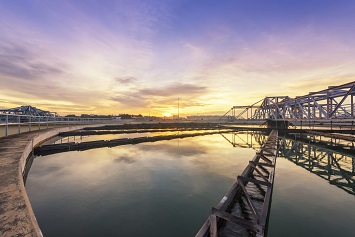Are you looking for some money for a water infrastructure project at your facility? Well, a surprising place you may find that money is the federal government. How, you may ask? Let’s take a look.
 |
Low-interest government loans and loan guarantees are now available for corporations interested in water infrastructure projects such as water recycling. Title V of the Water Resources and Reform Development Act, passed in June 2014, contains the Water Infrastructure and Finance and Innovation Act (WIFIA). WIFIA complements the Clean Water State Revolving Fund (CWSRF), in part, by making loans available not only to municipalities and nonprofit organizations but also to private operations under certain conditions. Under WIFIA, eligible assistance recipients range from corporations and partnerships, to municipal entities, to state revolving fund programs.
Eligible projects include (but are not limited to) reusing or recycling wastewater, stormwater, or subsurface drainage water.
EPA Puts the Money Out There
The U.S. Environmental Protection Agency (EPA) recently announced the availability of approximately $1 billion in credit assistance for water infrastructure projects under the WIFIA program. The EPA estimates that funds appropriated to the WIFIA program can be leveraged at a ratio greater than 50 to 1, which means the $17 million program budget could allow the EPA to make approximately $1 billion in loans and stimulate about $2 billion in total infrastructure investment. Some of the projects that WIFIA provides assistance for include:
- Drinking water treatment and distribution projects
- Wastewater conveyance and treatment projects
- Enhanced energy-efficiency projects at drinking water and wastewater facilities
- Desalination, aquifer recharge, alternative water supply, and water recycling projects
- Drought prevention, reduction, or mitigation projects
The EPA will evaluate projects using criteria such as the extent to which the project is nationally or regionally significant, helps maintain or protect public health or the environment, protects against extreme weather, and serves regions with significant water resource challenges.
The amount of WIFIA credit assistance may not exceed 49% of the reasonably anticipated eligible project costs.
Project Requirements
There are five criteria for a project to be considered for WIFIA credit assistance:
- The project and applicant must be creditworthy;
- The project must have eligible project costs that are reasonably anticipated to equal or exceed $20 million for large communities or be a project serving a community of not more than 25,000 individuals, or have project costs that are reasonably anticipated to equal or exceed $5 million.
- Project financing must be repayable, in whole or in part, from state or local taxes, user fees, or other dedicated revenue sources that also secure the senior project obligations of the project; must include a rate covenant, coverage requirement, or similar security feature supporting the project obligations; and may have a lien on revenues subject to any lien securing project obligations.
- In the case of a project that is undertaken by an entity that is not state, local, or tribal government or agency, e.g., a corporation or a nonprofit, the project must be publicly sponsored. To satisfy this requirement, the prospective borrower must demonstrate that it has consulted with and gained the support of the affected state, local, or tribal government in which the project is located.
- The applicant must have an operations and maintenance plan that identifies adequate revenues to operate, maintain, and repair the project during its useful life.
Get Your LOI In
The WIFIA program is currently accepting letters of interest (LOIs) for projects. The EPA will collect LOIs in two selection rounds in fiscal year (FY) 2017. The first LOI submittal period began on January 10, 2017, and ends on April 10, 2017. The second LOI submittal period, if needed, will begin on August 1, 2017, and end on September 29, 2017.
Tune in to tomorrow’s Advisor for what you need to include in your LOI.
